Description of previous item
Description of next item
Why We Celebrate American Archives Month
Published October 10, 2016 by Florida Memory
Every October, the State Archives of Florida joins with archives throughout the country to participate in a month-long dialogue about what an archive is, who archivists are, and why it matters to the average American citizen. Archivists are a passionate group of professionals dedicated to the faithful preservation of the historical documents that make up state, local, and national histories. Some of the stories living within these records can have far-reaching impacts on the modern people looking at them, and an archivist’s work is driven by the responsibility to provide public access to these potentially life-changing materials. Throughout Archives Month we will be sharing some of our best life-changing stories from the State Archives of Florida vault. But, in order for archived records to change lives they, too, must have a physical repository to call home. With that in mind, we’ve put together a brief history of how the State Archives of Florida came into existence and why it matters.
History of the State Archives of Florida
The State Archives of Florida as it exists now did not open until 1969, but several Floridians with a passion for preserving state history were at work for much longer. Early on in Florida’s statehood, the Secretary of State was charged with maintaining Florida’s historical records. However, not until the State Library of Florida opened in 1925 did any meaningful preservation begin. Prior to this, original state documents had no official home, and lived in moldy basements, hot attics, and other scattered locations inhospitable to long term preservation.
In the early 20th century, Caroline Mays Brevard, Florida historian and educator, emerged as one of the earliest advocates for the establishment of a “hall of history” for the state documents. In an era before women could vote, Brevard appealed to Florida’s lawmakers for an official state repository to collect and maintain Florida’s historical records.
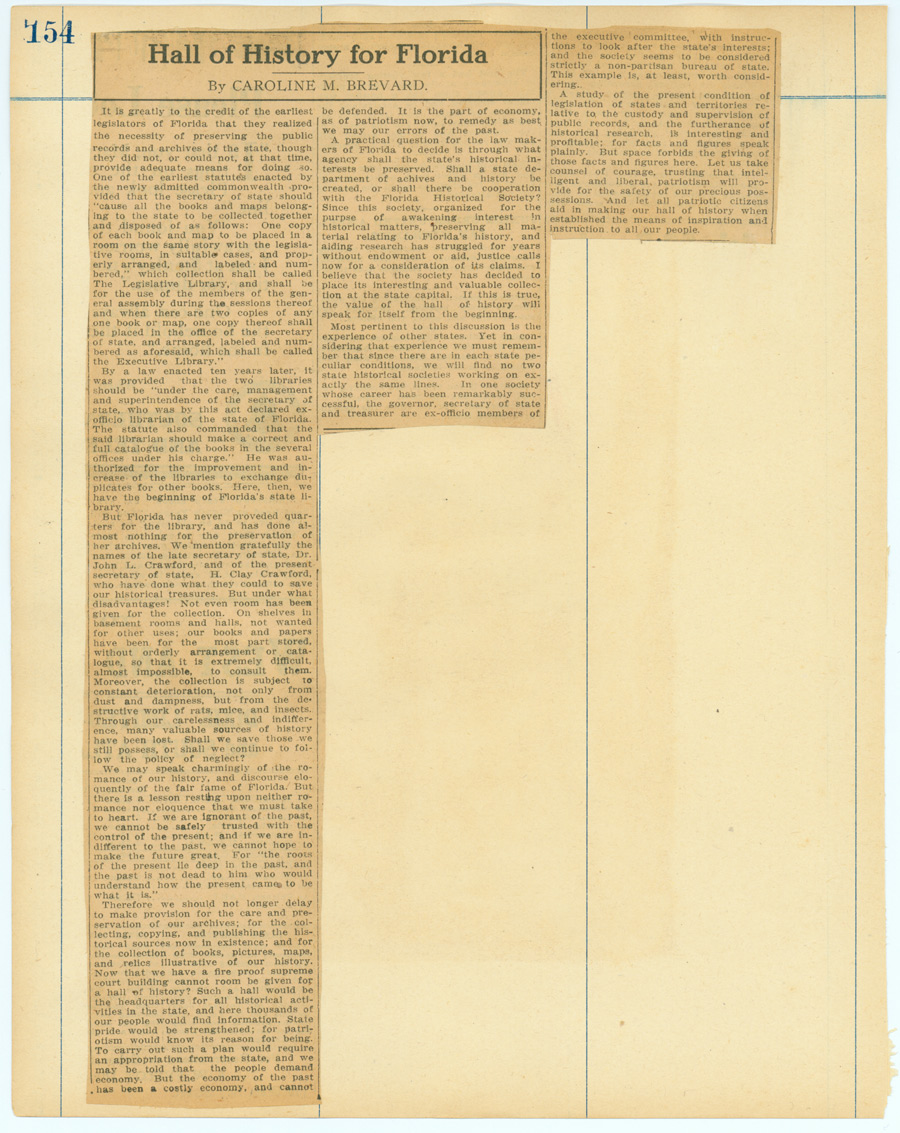
Caroline Brevard’s written appeal for a state repository of Florida’s historical documents, ca. 1900.
“We should no longer delay to make provision for the care and preservation of our archives…. Such a hall would be the headquarters for all historical activities in the state, and here thousands of our people would find information. State pride would be strengthened, for patriotism would know its reason for being,” urged Brevard.
Though Caroline Brevard died in 1920, five years before the establishment of a functional state library, her advocacy certainly contributed to the appointment of the first State Librarian, W.T. Cash , in 1927 and the first State Archivist, Dr. Dorothy Dodd, in 1941. After Cash’s death in 1951, Dodd succeeded him as State Librarian.
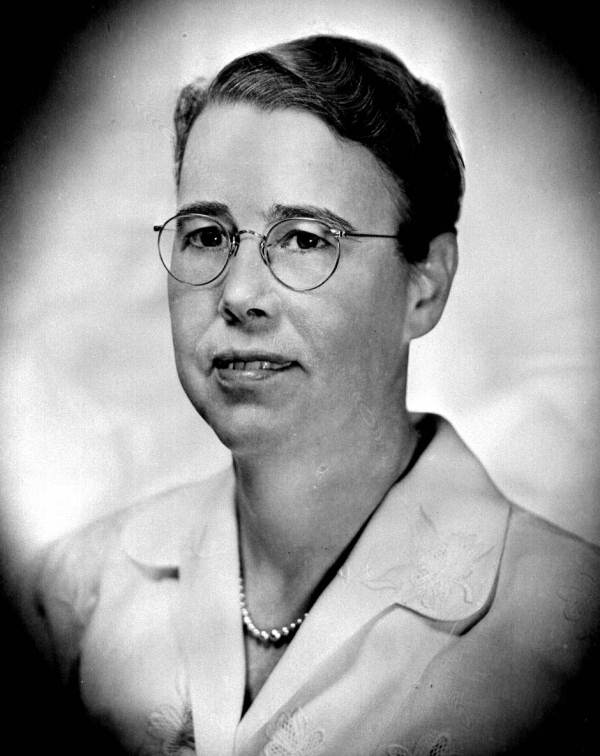
Portrait of the first State Archivist and the second State Librarian, Dr. Dorothy Dodd. Dodd graduated from Florida State College for Women in Tallahassee before earning her PhD in history from the University of Chicago.
Until the State Archives opened as its own entity in 1969, the State Library assumed archival functions, and was responsible for collecting and storing archival materials. During her tenure as State Archivist, Dorothy Dodd traveled the state in search of significant Florida-related historical records and manuscripts. She later recounting how she “started [the State Library’s Florida Collection] with the idea that anything that had to do with Florida had a place in th[e] collection.” By the time she retired in 1965, Dr. Dodd had collected 260 linear feet of territorial and state papers, and it is these items that formed the original core of the State Archives of Florida’s holdings.
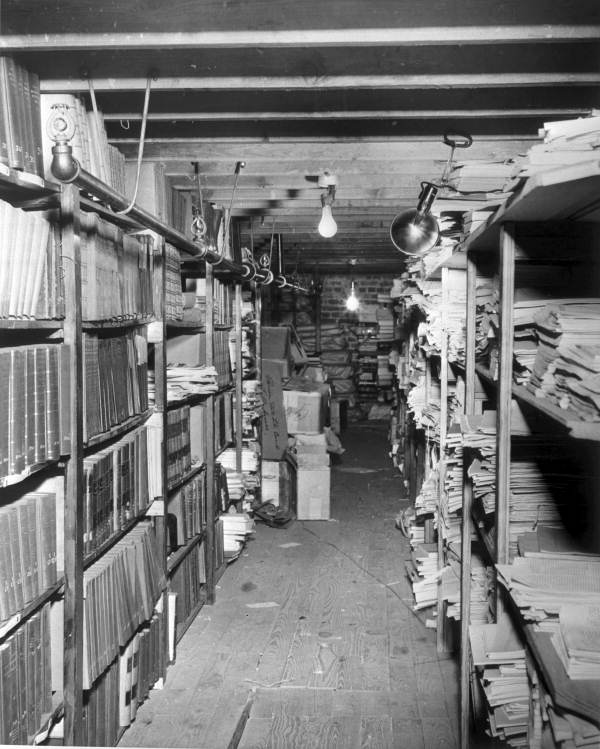
A view of the State Library’s storage area in the basement of the Old Capitol in 1947. Before the Department of State built a designated repository in the 1970s, the library’s collections were kept on different floors and wings of the capitol. Though archival best practices were not well-established at the time of this photograph, modern professional archivists follow a strict set of guidelines to ensure the longevity of their collections. Because of moisture’s destructive impact on paper, damp basements are not considered acceptable library and archive storage spaces. Modern archival best practices recommend a climate controlled setting for the preservation of historical records.
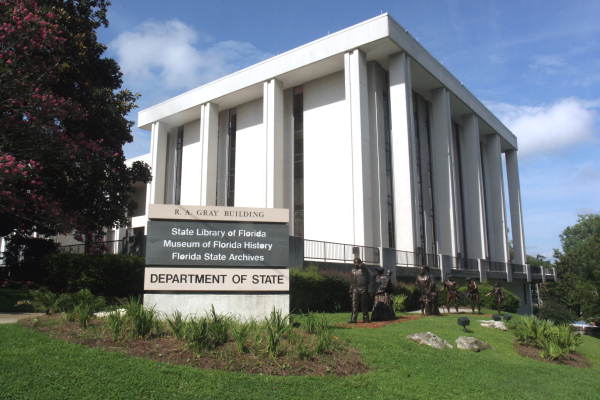
When the State Archives of Florida first opened in 1969, it was located at the old Leon County Jail in Tallahassee. In 1976, the state constructed the R.A. Gray Building at 500 S. Bronough Street in the heart of Florida’s capital city. Since then, the R.A. Gray Building has been the site of the State Archives as well as the Museum of Florida History and the State Library.
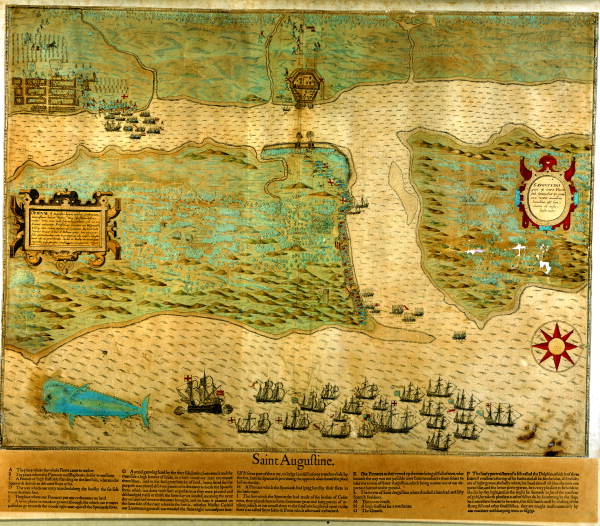
Italian cartographer Baptista Boazio’s original engraved, hand-colored map of Sir Francis Drake’s 1586 attack on St. Augustine is the oldest single item currently held by the State Archives of Florida. Additionally, it is the earliest known visual depiction of a European settlement in what is now the United States. In 1982 the State Archives acquired Boazio’s map of St. Augustine from the private collection of longtime Florida judge and historian, James R. Knott. Aware of the map’s historical significance, Knott wanted to transfer the map to the people of Florida and trusted the Archives to carry out that vision. Without a functional State Archives, though, the Boazio map, along with many other priceless records of Florida’s history, might still be sitting in private collections only available to a handful of people.
Why Celebrate Archives?
For over four decades, the State Archives of Florida has served Floridians with access to the records of their state. Specifically, the State Archives is statutorily mandated to “collect, preserve, and maintain the significant official records of state government and to inform the public about the existence and location of these records.” Additionally, the Archives is also permitted to collect, preserve, and maintain historic local government records, manuscripts, photographs, maps, plans, and other evidence of past activities in Florida.
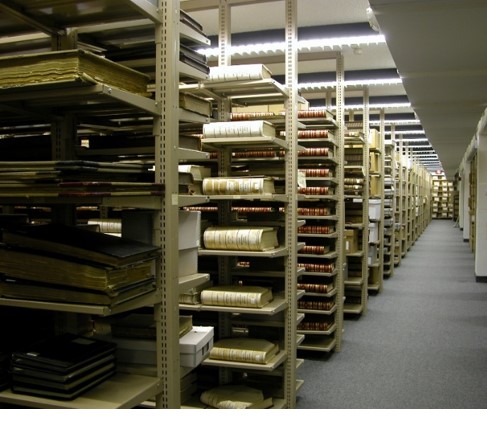
View of the climate-controlled stacks at the State Archives of Florida.
The State Archives of Florida now holds approximately 50,000 cubic feet of archival records. A staff of professional archivists is responsible for the continued acquisition and processing of archival records,the maintenance of existing records, and making them available for public access.
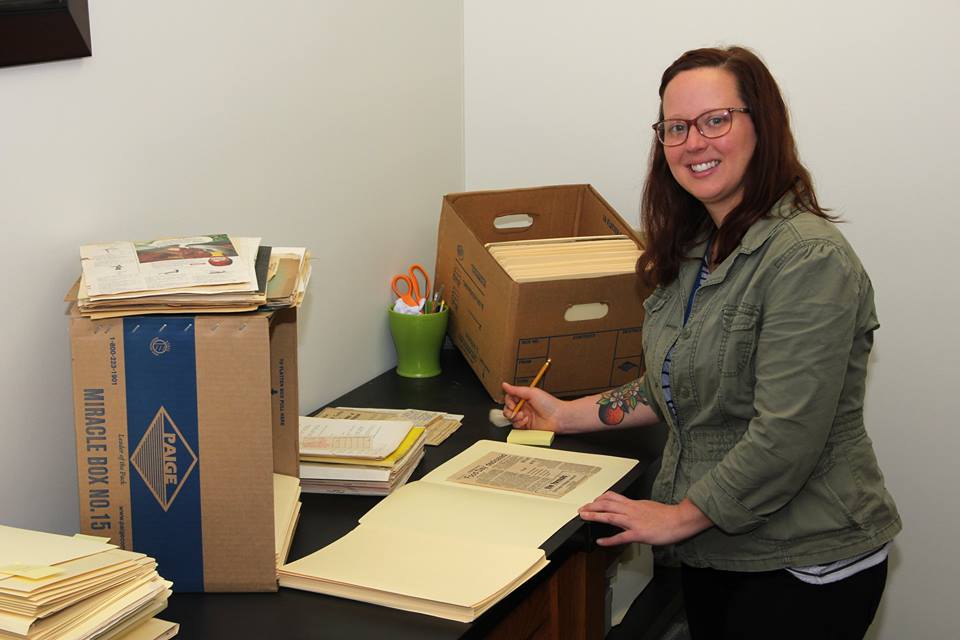
Collections Management Archivist, Tyeler McLean, processes a newly acquired collection. Often when the Archives acquires a new collection, it arrives in a disorganized condition. Before researchers can make use of a collection’s contents, an archivist must arrange and describe the materials first.
In reflecting on why archives should be celebrated, seasoned archivist Elisabeth Golding opined:
Why celebrate? Because American archives, and Florida archives, preserve and protect the foundations of our freedoms. Archives collect the records that make transparent government possible and preserve evidence of civil and property rights. We can cite a state or federal Constitution in defending our rights as citizens because archives preserve the integrity and authenticity of those original documents. We can hold government agencies accountable because archives preserve the original laws that set forth those agencies’ responsibilities and limitations and the budgets that show how those agencies spent taxpayer dollars.
But that’s not all we celebrate. Archives serve as the recorded memory of a community, a state, a nation, a society. Every day, students, teachers, historians, journalists, attorneys, and members of the public use records from the State Archives and other archival repositories to search their family history, study the development of communities and transportation networks, analyze legislative intent, trace land ownership and use, find resources for History Day projects, and find information about the actions and decisions of elected and appointed government officials.
Cite This Article
Chicago Manual of Style
(17th Edition)Florida Memory. "Why We Celebrate American Archives Month." Floridiana, 2016. https://www.floridamemory.com/items/show/342065.
MLA
(9th Edition)Florida Memory. "Why We Celebrate American Archives Month." Floridiana, 2016, https://www.floridamemory.com/items/show/342065. Accessed December 26, 2025.
APA
(7th Edition)Florida Memory. (2016, October 10). Why We Celebrate American Archives Month. Floridiana. Retrieved from https://www.floridamemory.com/items/show/342065

 Listen: The Latin Program
Listen: The Latin Program